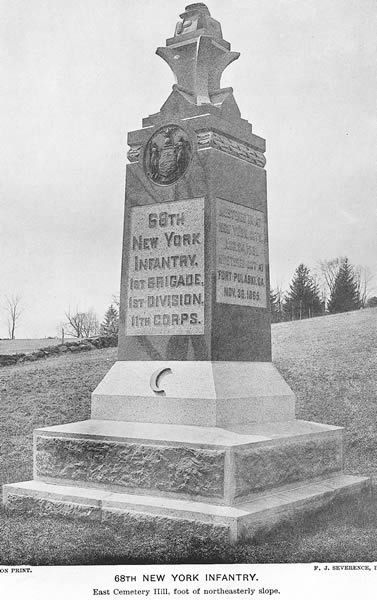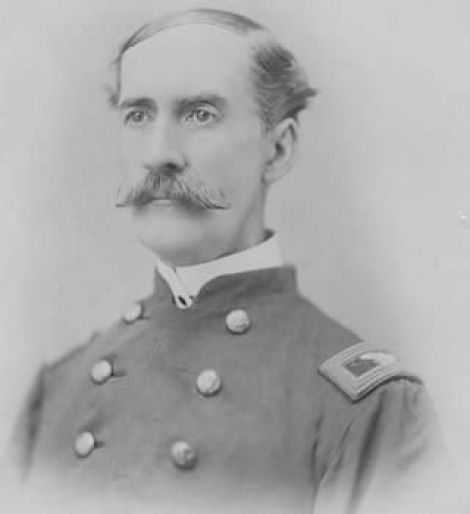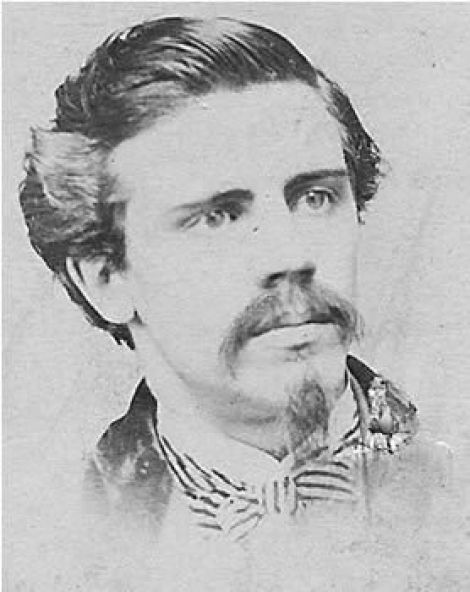68th Infantry Regiment
Nickname: Cameron Rifles; Second German Rifle Regiment
Mustered in: August 1-20,1861
Mustered out: November 30, 1865
The following is taken from New York in the War of the Rebellion, 3rd ed. Frederick Phisterer. Albany: J. B. Lyon Company, 1912.
Colonel Robert J. Betge received authority from the War Department, July 22, 1861, to recruit a regiment of infantry. The regiment was organized in New York City and there mustered in the service of the United States for three years, between August 1 and 20, 1861. The men were mostly recruited in New York City, a few in New Jersey, Maryland and Pennsylvania. It was recognized by the State and numerically designated August 19, 1861. The three years' men of the 8th and 29th Infantry, two independent companies, were, in April, 1864, transferred to the regiment, which, at the expiration of its term of service, was retained in the service, the men entitled thereto having been discharged.
The regiment left the State August 24, 1861; served in Blenker's Brigade, Division of Potomac, from August, 1861; in Steinwehr's Brigade, Blenker's Division, Army of the Potomac, from October, 1861; in the Mountain Department, same brigade and division, from April, 1862; in 2d Brigade, 2d Division, 1st Corps, Army of Virginia, from June 26, 1862; in 1st Brigade, 3d Division, 11th Corps, Army of the Potomac, from September 12, 1862; in the 1st Brigade, 1st Division, 11th Corps, Army of the Potomac, from April, 1863; in the 3d Brigade, 3d Division, 11th Corps, Army of the Potomac, from July, 1863; in 2d Brigade, 3d Division, 11th Corps, from March, 1864; in the 4th Division, 20th Corps, from April, 1864; in the District of Nashville, Department of Cumberland, 3d Brigade, defenses N. & C. R. R., from May, 1864; in the District of Allatoona, Ga., from July, 1865; in the District of Savannah, Ga., from November, 1865; and it was honorably discharged and mustered out, commanded by Col. Felix Prince Salm, November 30, 1865, at Fort Pulaski, Ga.
During its service the regiment lost by death, killed in action, 3 officers, 23 enlisted men; of wounds received in action, 2 officers, 19 enlisted men; of disease and other causes, 2 officers, 73 enlisted men; total, 7 officers, 115 enlisted men; aggregate, 122; of whom 8 enlisted men died in the hands of the enemy.
The following is taken from The Union army: a history of military affairs in the loyal states, 1861-65 -- records of the regiments in the Union army -- cyclopedia of battles -- memoirs of commanders and soldiers. Madison, WI: Federal Pub. Co., 1908. volume II.
Sixty-eighth Infantry.—Cols., Robert J. Betge, Gotthils De B. D. Inemais, Felix Prince Salm; Lieut.-Cols., John H. Kleesisch, Carl Vogel, Albert Von Steinhausen; Majs., Albert Von Steinhausen, Carl Von Vedell, Robert Rother, Adolph Haack, Arnold Kummer. The 68th, the 2nd German Rifles, was composed of members from New York city, New Jersey, Maryland and Pennsylvania, and was mustered into the U. S. service at New York Aug. I and 20, 1861, for a three years' term. It left for Washington on Aug. 24, was first attached to Blenker's brigade, but in October formed a part of Steinwehr's brigade, Blenker's division, and served in the vicinity of Washington until the spring of 1862, when it was ordered to the Mountain Department and became a part of Fremont's forces. At Warrenton Junction the regiment lost 2 missing, its first loss, and it was active at Cross Keys. On June 26, 1862, it was assigned to the 2nd brigade, 2nd division, 1st corps, and served in the Virginia campaign under Gen. Pope with a total loss of 92. On Sept. 12 it was attached to the 1st brigade 3d division, nth corps, which was posted near Centerville during the Maryland campaign, and there remained until December, when it was ordered to Fredericks-burg, but did not participate in the battle. Winter quarters were established near Stafford, Va., and in April, 1863, the regiment was transferred to the 1st brigade, 1st division, with which it fought at Chancellorsville, losing 54 in killed, wounded and missing. At Gettysburg the total loss was 138 and the regiment won high praise for its gallant work in the defense of Cemetery hill. In July the 68th was assigned to the 3d brigade, 3d division, with which it was ordered west. It was present at the battle of Wau-hatchie, Tenn., and in the Chattanooga campaign. During the winter of 1863-64 a large number of the men reenlisted and in April, the three years' men of the 8th and 29th N. Y. infantry were added to the ranks, the command remaining in service as a veteran regiment. During the summer of 1864 it served in the Districts of Nashville, Tenn., and Allatoona, Ga., and in November, was ordered to Savannah, Ga. The original members not reenlisted were mustered out at the expiration of their term of service and the remainder of the regiment at Fort Pulaski, Ga., Nov. 30, 1865. The 68th lost during service 46 by death from wounds and 75 from other causes.
NYSMM Online Resources
Battles and Casualties from Phisterer (pdf)
Battles and Casualties from Phisterer (spreadsheet)



